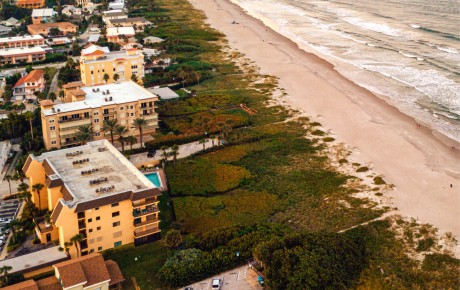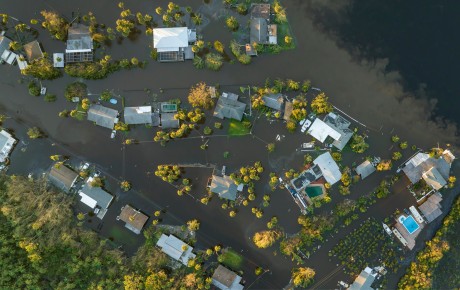
The levees hold Ida but future floods in New Orleans are still possible
Residents can’t assume that the ongoing flood risk has lifted.
In 2005, a storm surge triggered by Hurricane Katrina put 80% of New Orleans under water, taking over 1,000 lives in the city and inflicting damage of over US$160 billion. It was clear that the city’s flood resilience measures – primarily its system of levees – were no match for the combination of rainfall and storm surge, with the American Society of Civil Engineers (ASCE) reporting that there were ruptures at approximately 50 locations in the city’s flood protection. “The catastrophic failure of New Orleans’s hurricane protection system represents one of the nation’s worst disasters ever,” concluded the ACSE
Bigger winds…
Given the devastating losses from Katrina, the trepidation of New Orleanians as they prepared for the arrival of Hurricane Ida on 29 August 2021 – the same date that Katrina made landfall 16 years earlier – was understandable. Ida was forecast to be a more powerful hurricane than Katrina and, when it hit land, that proved to be the case arriving as a Category 4 hurricane with winds in excess of 150mph. At the same stage, Katrina was Category 3 with winds of 127mph.
…smaller storm
Despite the wind strength, the homeowners in the path of Ida had two factors in their favour. One was the comparable size of the storms; while Katrina was packing tropical storm winds as far as 230 miles from its centre, Ida’s reach was more like 140 miles. That probably made the real difference in the size of storm surge which for Katrina – at around 8.5 metres – was likely to have been far higher than Ida’s own storm surge.
Levees did their job
The second critical factor for residents was the increase in the flood resilience of New Orleans since 2005. Thanks to a huge US$14.4 billion investment in the city’s flood protection infrastructure – including the construction of the ‘Great Wall of Louisiana’, a 1.8 mile-long, $1.3 billion storm surge barrier, the largest civil-works, project in the US Army Corps of Engineers’ history – there was reason for those living in the New Orleans metropolitan area to be more optimistic. And the immediate assessment is that the new measures did their job.
“Although the full impact of Hurricane Ida is still developing and we can’t overlook how the city and its people have suffered from extensive and prolonged power outages,” says Tom King, Property Flood Underwriter for Hiscox London Market, “the levee system and other flood protection measures have performed well around the city and it will not be a big flood damage insurance event in the immediate New Orleans area. We must though, acknowledge the flood devastation that Ida has caused further up the north east coast to people and property, as well as in other areas of Louisiana outside New Orleans’ area of flood protection.”
Louisiana towns like LaPlace for example, which was due to have its levees upgraded, and Lafitte saw their flood protection breached. According to press reports, Lafitte’s levee was built to manage 7.5 feet of floodwater, but this proved inadequate. “Given the success of New Orleans’ flood protection system, it’s likely that there will be renewed calls to make sure that other areas within Louisiana benefit from the same investment to provide the necessary flood protection,” says King. And funds look likely to come from Biden’s recently passes Infrastructure Investment and Jobs Act, with the Louisiana Department of Transportation and Development (DOTD) announcing that the state is expected to receive $5.8 billion over the next five years.
“There is a risk that the improved flood resilience in New Orleans could lead many residents to believe that flood insurance is an unnecessary purchase. But while the insurance industry recognises the decreased risk of a catastrophic flood event in the area with risk adjusted premiums, no one should be under the allusion that the levees are impregnable,” Tom King.
No levee is impregnable
Increased infrastructure investment shouldn’t however, disguise the ongoing risk to life and property from flooding. “There is a risk that the improved flood resilience in New Orleans could lead many residents to believe that flood insurance is an unnecessary purchase. But while the insurance industry recognises the decreased risk of a catastrophic flood event in the area with risk adjusted premiums, no one should be under the allusion that the levees are impregnable,” says King and there remains the ongoing risk of a bigger storm as climate change impacts weather systems. “It does not mean that the lesson of Hurricane Ida is that metropolitan New Orleans has adequate hurricane protection,” says Tulane University history professor Andy Horowitz, as reported by ABC News. “It means it had adequate protection against this storm surge. As the system is challenged by stronger and more frequent hurricanes. I think many experts are very concerned about the rather low level of protection that New Orleans has."




